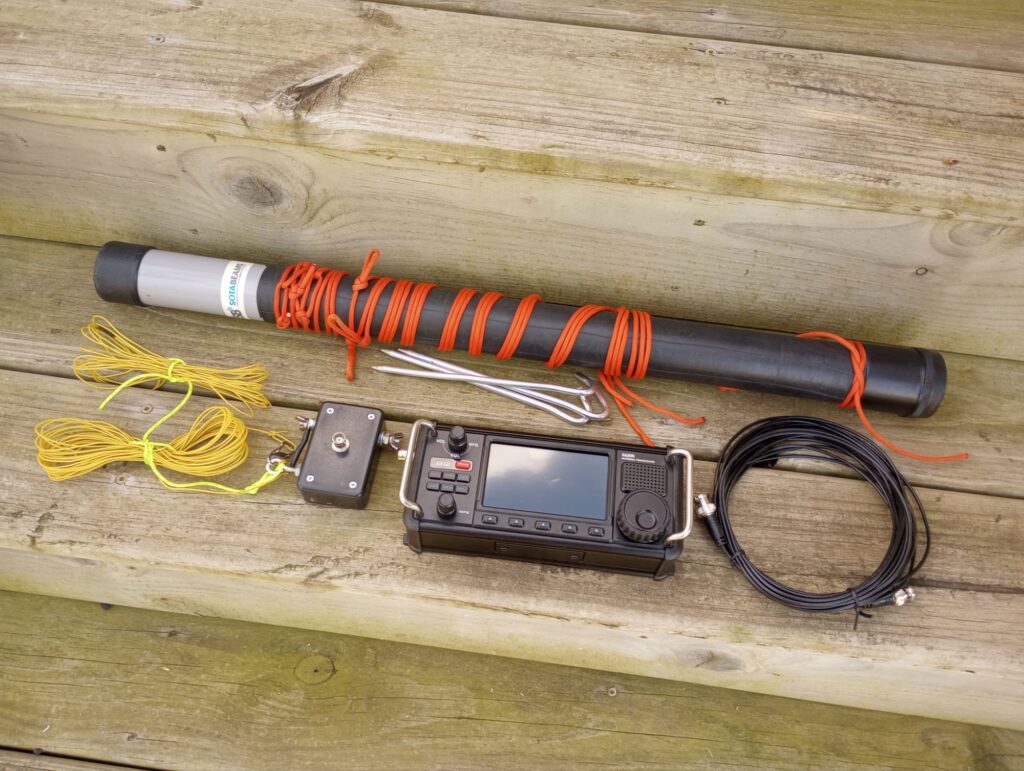The Xiegu X6200 arrived this morning, a few days earlier than was projected when it shipped. So far I like it. I’ve made a couple of contacts to POTA stations this afternoon over my lunch break, both at 5W and 8W, using the built in microphone and using the handheld one. Except for band conditions being rather bad, I had no issues.
After the work day ended, I grabbed the 9:1 end fed “random” wire antenna, the 10m mast, some feedline, and headed to the back yard.

The internal tuner had no issues with the 9:1 from 40 to 10m. Even with the display brightness turned down as far as it could go, the screen was readable in direct sunlight.
I have a sneaky suspicion that this is going to turn into my default POTA rig. We’ll see. I may even try to activate a park tomorrow night…
